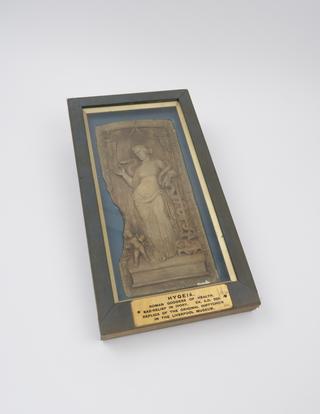
Hygeia was the ancient Greek goddess of health. She gave her name to the philosophy of hygiene. The cult of Hygeia started in Athens in the 600s BCE, in connection with the cult of Athene, goddess of wisdom and purity. Statues of Athene and Hygeia stood at the entrance to the Acropolis temple in Athens.
Hygeia was a young goddess, daughter and chief attendant to Asklepios, the god of medicine. She was in charge of cleanliness and how to live a long life (preventive medicine). She also had two other medical sisters: Panacea (‘Cure-All’) and Iaso (‘Remedy’). The Romans named her Salus.
In classical sculpture she was often shown holding or feeding a large snake (the symbol of Asklepion medicine) in her arms. Her other official symbol was a large water basin and a snake. Statues of Hygeia were erected in all the major healing centres sited in the temples of Asklepios. Her primary temples were in Epidaurus, Corinth, Cos and Pergamon.
The cult of Hygeia spread during the 400s BCE after the first appearance of plague in Greece, and was established in Rome in the 100s CE. The Roman traveller Pausanias noted her cult statues all over the empire, adorned with votive offerings.
In Greek ‘hygeia’ meant ‘soundness’ or ‘wholeness’. Hygiene in medicine was about maintaining the ‘wholeness’ of the body and keeping it fit. This is called ‘health’. Hippocratic doctors from the 300s CE onwards gradually formulated a philosophy of hygiene that covered every possible aspect of health - mind, body and environment. The influence of this thinking continued to impact on public health reforms during the last two centuries.









